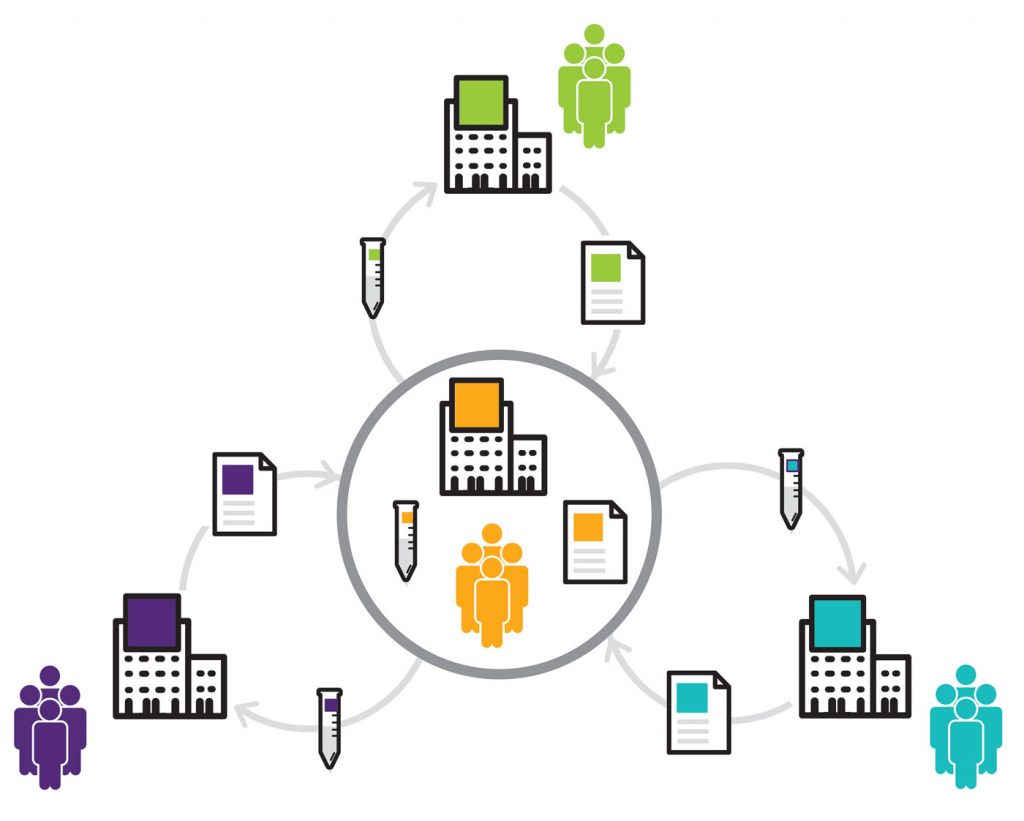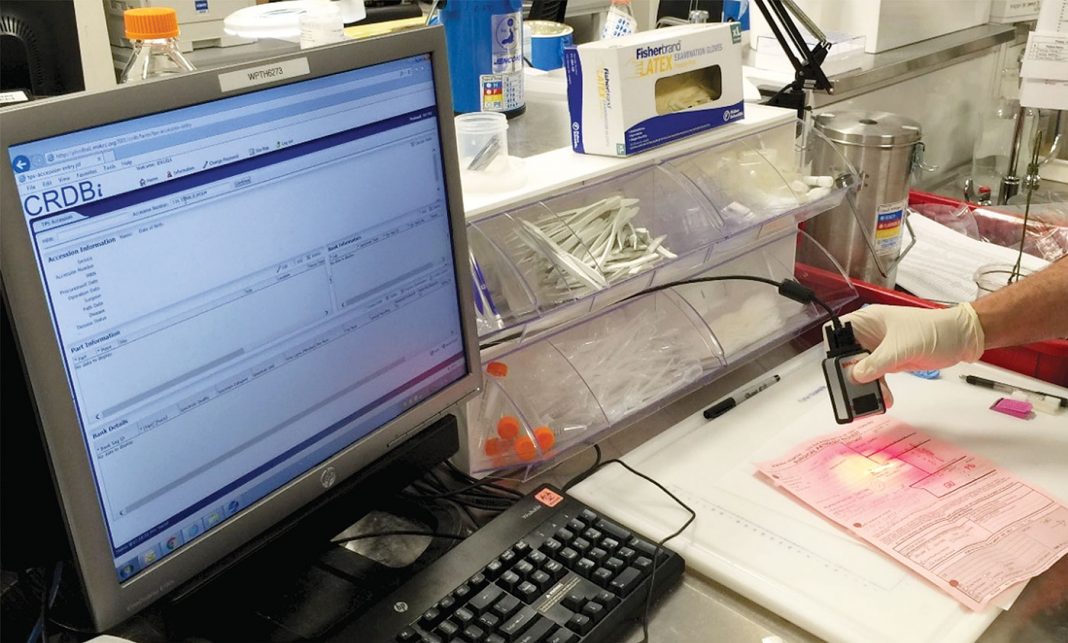Every new genetic discovery, disease biomarker, and advance toward precision medicine depends on organizations that rarely get the spotlight—biobanks. Working behind the scenes, biobanks are responsible for the infrastructure that assembles, stores, and manages human specimens, including DNA isolates, blood samples, and surgical tissues, along with any and all associated data.
Although biobanks have existed for decades, they’ve experienced a more recent surge in numbers and importance with the advent of “omics.” Of the omics technologies, the most familiar are probably those focused on the genome. These technologies, however, are being joined by technologies focused on the transcriptome, the proteome, the metabolome, and more.
By 1999, there were already more than 300 million biological specimens in public and private biobanks around the United States. A national survey conducted in 2012 assembled a list of more than 630 biobanks around the country, most of them tied to other academic institutions, hospitals, and research institutes, and established primarily for research on a particular disease. Many of those biobanks individually house hundreds of thousands of samples, including blood, cell lines, saliva, urine, and cerebrospinal fluid.
“As we move forward and want more quantitative measurements at many levels—DNA, RNA, proteins, small molecules—and as we begin doing precise measurements on more people, the more critical it is to have [high-quality] samples that really contain and can reproduce answers to the questions we’d like to answer,” says Michael H.A. Roehrl, MD, PhD, director of the Precision Pathology Biobanking Center (PPBC) at Memorial Sloan Kettering Cancer Center.
Such samples have taken on increasingly important roles not just for basic biological discovery but also for drug development and the search for biomarkers that may help to predict, for instance, who will respond to a particular therapy. Consequently, there is an ever-increasing interest and need to have well cared for and curated human samples that offer the needed reproducibility. “The good old days of archiving tissue in paraffin blocks alone are just not good enough,” Roehrl points out.
It is clear that the demand will continue to grow for high-quality biospecimens, that is, biospecimens that may be used with confidence for various purposes now and in the future. Likewise, demand will grow for the biobanks that house, annotate, track, and distribute such specimens. (Mordor Intelligence estimates that the biobank market will maintain a 9.2% growth rate between 2019 and 2024.) So, what does it take run a first-class biobank?
Science-driven and future-proof biobanking
At the PPBC, “future proofing” is a key concept. The organization collects, stores, and preserves samples in a way that ensures their long-term stability. The PPBC also ensures that sample collection is science driven. The types of specimens that are collected and the ways they are prepared depends on the scientific questions being asked and the hypotheses being tested. Although many of the samples are used for immediate research, others feed into innovative, new projects.
In pursuing these goals, Roehrl says academic health centers and hospitals must develop the information technologies and databases required such that samples are as “information rich” as possible. At the PPBC, the aim is to build a representation of each patient over time, from diagnosis through treatment and long-term follow-up. As Roehrl explained in The Pathologist, the PPBC’s system makes it possible for researchers to obtain answers to elaborate queries. (For example, a researcher might ask, “How many frozen research samples containing cancerous tissue does the bank hold from patients born after 1960 with a diagnosis of KRAS-mutated colon cancer?”) Besides answering such queries, the PPBC can readily identify all relevant samples and easily locate them in physical space.
That ability to not only physically find samples but also to identify those that can be used to address particular questions is invaluable, Roehrl notes. “At the end of the day, a million samples frozen in the basement without annotation is essentially worthless,” he elaborates. “It’s the combination of the two that makes a goldmine.”
Ensuring high quality
Tracking and assessing biological samples and ensuring their quality can be a significant challenge considering the sheer number of them now housed within biobanks, according to Shaun Cordes, PhD, a senior director of product management at Fluidigm. To address this need, Fluidigm offers a product called the Advanta™ Sample ID Genotyping Panel.

Advanta Sample ID relies on Fluidigm’s microfluidics technology to assess sample quality and generate a unique DNA fingerprint. The panel can be used to assess samples when they are acquired and can be used again prior to their distribution to researchers. The fingerprint is based on 96 single nucleotide polymorphisms (SNPs) that commonly differ between people, Cordes explains. The chance that two randomly selected people would share a fingerprint is practically nil—about 1 in 1.09 × 1017. The method ensures not only that you’ve got the right specimen tube and that it contains some sample, but also that the specimen in the tube is really the right specimen.
Tae-Hwi (Linus) Schwantes-An, PhD, an assistant research professor of medical and molecular genetics, works at the Indiana University Genetics Biobank (IUGB). The IUGB launched almost 30 years ago in support of Alzheimer’s disease research and now stores more than a million biospecimens of various kinds. Quality control is of paramount importance at the IUGB, and it depends on Fluidigm’s technology to ensure sample quality and identity. The biobank uses a custom-designed panel of 96 SNPs, and incorporates the panel into a workflow that allows the biobank to simultaneously confirm sample identity and conduct quality checks at key points in the lab’s workstream.
It’s important to establish the correct identity when samples are received, Schwantes-An emphasizes. “It’s equally crucial,” he continues, “to keep track of sample identity throughout our processes and ship the correct sample every single time.”
Another strength of the microfluidic system, he says, is that it requires only a tiny amount of DNA. That’s key because those samples are intended for use in future studies. The Advanta system ensures quality and identity of a sample with little wasted DNA and low cost, points out Schwantes-An.
Forging connections, building trust
Another key to making the most of biobanked samples is connecting biobanks to researchers anywhere in the world who could use them. Making those connections, particularly by linking biobanks at academic institutions to researchers in industry, is the focus of Canada’s Trans-Hit Bio.
Trans-Hit Bio bills itself as the largest network of biobanks in the world. For clients that are primarily in the pharmaceutical industry, the company searches for the needed biological samples and associated medical data via an extensive network of academic biobanks.
Vanessa Tumilasci, PhD, commercial director for Trans-Hit Bio, reports that the company now has more than 500 collection sites. She says one of the most important aspects of what the company does is the forging of relationships between researchers at academic institutions and those in industry, who oftentimes don’t understand one another.
“We bridge the gap of communications between the two sides,” Tumilasci said. “We really want to bring those two together.”
At the University of California, San Francisco, Rohit Gupta recently was named the first-ever chief biobank officer, a move that underscored the importance of biobanking in research and precision medicine now and going forward. Gupta says his goal is to bring in samples in a standardized pipeline to ensure their high quality and efficient distribution, much as books are distributed from a library.
In addition to ensuring high-quality, reproducible samples and research, Gupta highlights the importance of seeing to it that samples are handled properly and tracked in ways that reveal how and by whom they and the data they generate are being used. He notes that these efforts are important not only for research, but also for building trust with members of the broader community—the very people who are contributing their samples in support of research progress.
His UCSF group is putting an emphasis on educating the community about the value of biobanks and research. They’re working to develop various outreach efforts to help people understand how their samples will be used and to encourage the participation of more diverse groups of people who have historically been underrepresented in research. Such efforts promise richer and more diverse collections of biobanked samples.
“Biobanks have a prominent role as a bridge between the community at large and the researchers at the bench doing the science that hopefully leads to a better tomorrow,” Gupta says.



